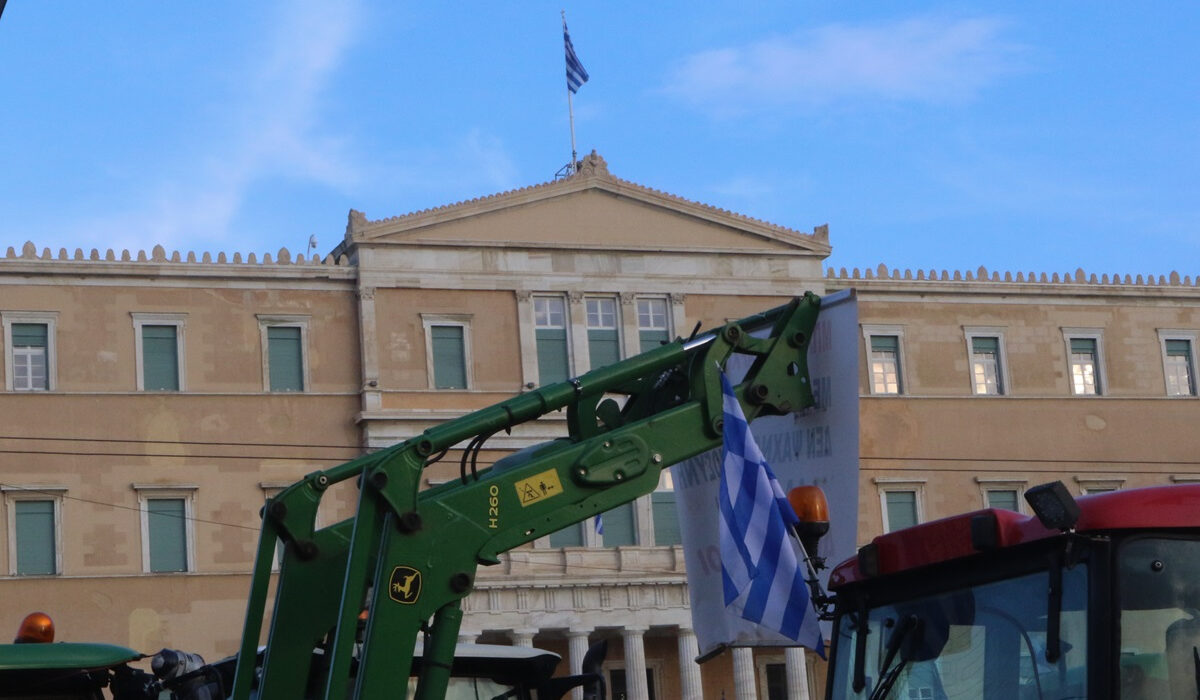In an unprecedented display of discontent, Greek farmers took to the streets of Athens on Tuesday in a bold protest that brought tractors roaring through the city. This protest, marking a month of blockades and representing a 60-day standoff, unfolded as a convoy of tractors traversed toll booths and Karaiskaki Square before converging on Syntagma Square, symbolizing the mounting frustrations within the agricultural community.
Organized with meticulous precision, the demonstration served as a collective call for urgent government intervention. Dozens of tractors lined up outside the Parliament, drawing attention to the multifaceted challenges faced by farmers across Greece.
This pivotal demonstration followed the strategic withdrawal of farmers from the Platycambos blockade, a decision made in the wake of an unsuccessful meeting with Prime Minister Kyriakos Mitsotakis. The farmers’ statement outlined their grievances, emphasizing the pressing need for government action to address damages caused by September storms and the subsequent flooding of farmlands.
Earlier in the day, tensions flared on Amalias Avenue, where clashes with the police briefly disrupted the otherwise predominantly peaceful protest.
The protest prompted the Greek Police (ELAS) to implement traffic regulations, temporarily closing central roads to accommodate the farmers’ route. Disruptions on Athens Avenue underscored the profound impact of the protest on the city’s daily life.
From regions across the country, farmers, livestock breeders, and beekeepers arrived in Athens using their vehicles and buses. Preliminary estimates suggested the participation of around 5,000 farmers, accompanied by approximately 60 buses from Thessaly alone.
A poignant moment unfolded during the protest when farmers lifted a symbolic casket adorned with wreaths on their tractors, providing a stark visual representation of their concerns about the future of Greek agriculture and the escalating production costs.
The farmers’ grievances stem from a series of issues, including the destruction caused by September storms and the subsequent flooding of farmlands. Despite a nationwide meeting with Prime Minister Mitsotakis, which aimed to find resolutions, the farmers felt their concerns were inadequately addressed. Their demands include immediate compensation for flood-damaged areas, urgent decisions on draining flooded farmlands through a tunnel, and the establishment of networks of agricultural organizations without bureaucratic delays to prepare for future calamities.
The failed negotiations prompted the farmers to intensify their protests, culminating in the symbolic withdrawal from the Platycambos blockade. As tractors continued to fill the streets of Athens, this demonstration became a critical turning point in the ongoing struggle of Greek farmers, underscoring the urgent need for government attention to secure the future of the nation’s agricultural sector.
The Greek farmers’ protest in the Syntagma Square, in pictures:











